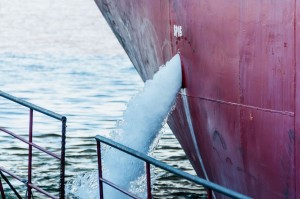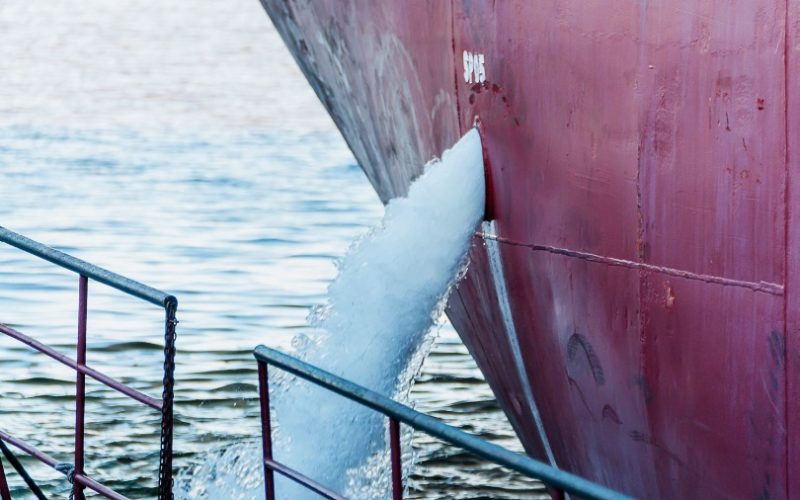(SACRAMENTO, Calif.) — The state of California is known for its enforcement of stringent environmental regulations, many of which affect visiting ships. This year, the state has introduced a new at-berth emission regulation that aims to further reduce the public’s exposure to air pollution generated by vessels berthed at its busiest ports, and greatly enhanced the criminal penalties for oil spill related offenses in its waters.
Under its Marine Invasive Species Program (MISP), California has established biofouling management and ballast water discharge standards that are more stringent than those enforced under the U.S. federal regulations and the International Maritime Organization’s (IMO) conventions. However, California has yet to implement its ballast water discharge performance standards – primarily because the standards are still technically unachievable.

It is also worth noting that, once fully implemented, the new Vessel Incidental Discharge Act (VIDA) may prevent state authorities from implementing state-specific management requirements or standards for vessel discharges, including ballast water, that are stricter than the federal standards. For now, when calling at ports in the U.S. or sailing through U.S. waters, it is always important to bear in mind that state laws may be in force in addition to U.S. federal law and that state laws can be more stringent than those set by the national government and can carry different penalties.
California’s new ballast water management requirements
As a temporary measure until technological advances enable compliance with the state’s more stringent ballast water discharge performance standards, the California State Lands Commission (SLC) has aligned its discharge requirements for vessels arriving at California ports with those set by the U.S. Coast Guard (USCG). The SLC has jurisdiction over vessels that are 300 gross registered tons and above that carry or are capable of carrying ballast water.
California’s ballast water management requirements are stipulated under Article 4.7 of the California Code of Regulations and the amended Article 4.7, which becomes effective on Jan. 1, 2022, includes the following main changes:
• Incorporates the federal ballast water discharge standards set forth in section 151.2030(a) of Title 33 of the Code of Federal Regulations (CFR), and the corresponding implementation schedule outlined in 33 CFR 151.2035(b), into California law.
• Delays the compliance dates for the more stringent interim and final California ballast water discharge performance standards to 2030 and 2040, respectively, due to a lack of available ballast water treatment technologies to enable vessels to meet the California standards at this time.
• Establishes operational monitoring and recordkeeping requirements for vessels that use a ballast water treatment system to meet ballast water discharge performance standards.
• Authorizes SLC staff to collect ballast water and sediment samples for research purposes in addition to compliance assessment.
Practical implications
Under the amended Article 4.7, all eligible vessels that are discharging ballast water in California will be required to use one of the following methods to comply:
• A ballast water treatment system that has been type approved by the USCG;
• A ballast water treatment system that has been designated as an Alternating Management System (AMS) by the USCG, or
• Use water from a U.S. public water system as ballast water.
The CLSC’s Article 4.7 information sheet further clarifies that any extensions to a vessel’s compliance date granted by the USCG will be equally accepted under the Californian ballast water regulations. Under the federal ballast water regulations, the USCG accepts ballast water exchange as an accepted ballast water management method until a vessel reaches its compliance date under the schedule in 33 CFR 151.2035(b), or as granted by an extension under 33 CFR 151.2036. After a vessel’s compliance date, the vessel will be required to use one of the acceptable methods listed above.
Demonstrating compliance
Vessels visiting California ports must ensure that their ballast water treatment system is operated in accordance with the design limitations stipulated by the manufacturer, or set forth in the USCG approval documents, and must maintain the following records onboard:
• Printed or electronic functionality monitoring and calibration records for a minimum of two years.
• Printed or electronic records of any biological monitoring performed, from at least the past two years, including dates of the monitoring, the individuals or entities who performed the tests, and methods used.
• The ballast water treatment system type approval certificate, or AMS designation letter, issued by the USCG, as applicable.
• Procedures to manage ballast water in case of equipment malfunction.
Upon request, vessels must also ensure that SLC staff are provided access to ballast water tanks and sampling ports, unless access is restricted due to safety concerns.
For more information, go to the Gard website.
– Gard

